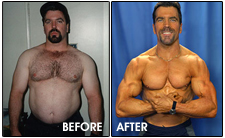|
The Truth about Muscle Confusion
by Scott Abbett |
|
If you were on a quest to REALLY discover the truth about building muscle, what do you think your ideal first step would be? Should you eat more protein? Should you spend no more than forty minutes to complete a workout? How about doing big compound exercises and making sure to eat so often you can hardly hold a conversation without spitting food from your mouth? Yeah… there’s a lot of great advice out there, isn’t there? (Sarcasm overload)
Your best bet would be to first eradicate any bodybuilding fallacies from your repertoire of training knowledge and practice. Holding on to such fallacies or purchasing a muscle building course that adheres to them is further unneeded advancement toward natural bodybuilding futility and frustration. I’ll assume that’s not what you want to spend your hard-earned money or valuable time on. But if one’s objective is to make bodybuilding progress, focusing on the tangential pump through an attempt to “confuse” the muscles can actually be detrimental. When an individual keeps changing his or her routine in a quest for “muscle confusion”, it often causes goal setting and progress measurement confusion. Accomplishing an exciting goal in life (whether bodybuilding or otherwise) requires our ability to read and measure feedback. How can one possibly interpret feedback in the form of output if they are too-often changing their input? They can’t! And that’s why people I observe at the gym who prefer spontaneity in their workouts while rationalizing that they’re “shocking” their bodies rarely if ever possess nice physiques. Do yourself this favor: Remember that the biggest truth about building muscle can be summed up in two words; ‘overload’ and ‘recuperation’. When you carry out these two things successfully, you’re on your way to bigger muscles. |




